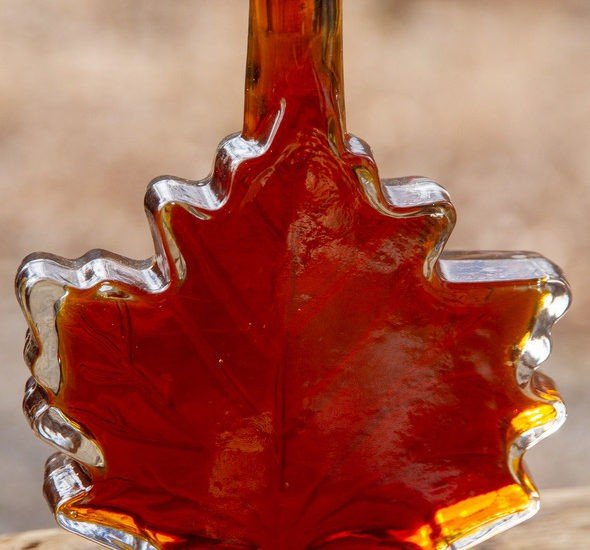
By Janelle Atyeo
NATURAL RESOURCES CONSERVATION SERVICE (NRCS), Huron, S.D., September 25, 2018–Brothers Ross and Levi Brown came back to the family farm near Trent, South Dakota, with some new ideas, and they put them to work not a moment too soon.
The brothers, though three years apart, graduated from South Dakota State University the same spring day. Ross remembers driving home in a downpour and checking fields. He watched the water running down every wheel track across the gradually sloping hill of his dad’s farm. Four inches of top soil piled up on the end rows. That’s when he realized they needed to change some things about the way they farm.
“This isn’t sustainable,” he said.
Now Ross, 32, and Levi, 29, have their own operations where they strip till their corn acres, no-till soybeans and plant cover crops with every opportunity. They’re slowly convincing Dad to shift his methods, too.
“There’s a lot of change from five years ago,” Levi said.
Using a cover crop in a corn and soybean rotation can be tricky because of timing with planting and harvest. Farmers try to get their cash crop in as early as possible and give it the longest growing season the weather will allow. Establishing a cover crop before winter sets in can be a challenge. The Browns are making it work by planting cover crops after harvesting corn silage to give the cover as much growth as possible before the freeze.
One particular cover crop has proved especially valuable and thankfully hardy on the Brown farm – cereal rye.
Their goal is to plant rye after every cash crop. That means seeding some as late as mid-October after soybean harvest. Even when planted that late, the rye grows several inches tall before frost hits and picks up again in the spring, bringing several benefits for the soil.
Planting rye before corn isn’t usually recommended since both are grasses and rye tends to tie up nitrogen needed for corn. The Browns make it work by strip tilling before corn planting, which helps handle residue left from the rye crop. In recent years, the brothers have also experimented with drilling soybeans into living rye – also known as planting green.
As a young farmer without much to his name, Ross said his first idea for planting rye was to save money on feed, baling it for his cattle. But the endeavor evolved pretty quickly into a soil health builder as well.
The first benefit Ross noticed was that his fields could handle those heavy rains like that graduation day soaker. Rye does a great job using excess moisture, and coupling it with a minimal tillage helps build soil aggregates and structure.
“When we have improved soil structure, we have enhanced the opportunity to get the water to infiltrate and, in turn, be stored,” said Rhonda Nelson, Natural Resources Conservation Service (NRCS) District Conservationist in Moody County.
On years the Browns apply manure to the field, rye helps capture some of the nutrients before they can be lost to leaching or runoff. Once the rye is terminated, the biomass stays behind, protecting the soil and returning the nutrients as it breaks down.
Having a cover crop growing in the off season is beneficial for other reasons. It’s roots help keep the soil in place and the plant feeds carbon into the soil, making for an active community of worms, beneficial bugs and soil microbes.
The Browns also plant turnips and radishes in cover crop mixes with cost-share received through NRCS’s Environmental Quality Incentives Program (EQIP). It’s prompted the brothers to scheme different ways they could apply the seed and how they might incorporate their cattle by grazing cover crops.
“Adding more diversity with the rye captures all the crop types and helps take it to the next level,” Nelson said of the NRCS program.
NRCS Conservation Agronomist Eric Barsness, Brookings, SD, ranks the benefits of cover crops with No. 1 being erosion control. Cover crops are also great for adding organic matter to the soil, reducing compaction and capturing extra nutrients after applying manure. Weed suppression is another way cover crops help. Rye especially greens up very early in the spring before weeds take hold.
“It can really just out-compete a lot of weeds,” Barsness said.
That’s a benefit the Browns have noticed as well.
The family farms in what’s referred to locally as the “Trent bottom.” There’s a high water table and it floods regularly.
“This is a challenging area,” Nelson said.
At first, the Browns used rye to build soil on their sandy ground, but they found it also works well on the fields of tight clay that have been “worked to death” in the past, as Ross put it.
The Browns have gone against the grain for what’s standard in their neighborhood where deep tillage is the norm. It’s taken some work to convince their dad, Kevin Brown, to change the way he’s farmed for decades.
The brothers’ tactic was to change his mind by showing the success they’ve had on their own fields – and maybe sneaking the strip tiller onto his land when he’s not around.
They’ve been able to give him some strong evidence. Kevin has said he is happy with the money his boys helped save in fertilizer from implementing these soil health practices. The Brown’s agronomist is also pleased and has become a big advocate of their new land management style.
Outside the home where they grew up, the land is low and several draws run through the property. It’s usually too wet to grow soybeans there, but Ross experimented this spring.
His planter took readings of the soil moisture, which measured as much as 50 percent in some areas. It was a different story in the home field where a rye cover crop was planted last fall. The rye grew to boot stage before the Browns hayed it in spring. They planted soybeans the next day, and soil moisture in the furrow was 25 to 30 percent. The rye had soaked up the excess moisture.
“It was really crazy how much water it will move out of the soil,” Ross said.
“If growing rye in an area that tends to be dry side,” Barsness said “it’s a good idea to terminate the rye earlier before it soaks up much needed spring rains.”
The Browns typically seed 40 pounds of rye seed per acre. If they plant later in the season, they use a higher population so there’s a better chance the rye will take hold and grow a good cover. NRCS recommends 90 pounds of seed per acre when broadcasted or aerial seeded for good spring weed control or if producers plan to graze the crop. If planting early – before mid September – SD NRCS granted a statewide variance in 2018 allowing the rate to be lowered to 40 pounds per acre so SD NRCS can evaluate the effectiveness of the lower seeding rate.
Time after time, the Browns are surprised at how the rye comes through for them.
On another low lying field, Ross was anxious to get his soybeans in the ground before it got too late in the season. He no-tilled them into tacky ground and wasn’t expecting much out of them.
When he checked the field after they had emerged, there was water standing in the wheel tracks from planting time, but the beans were grass green. He credits the rye.
“The best thing you did for this ground was put it to rye last year,” Nelson said, walking through the field of waist-high beans and 75-pound-per-acre rye residue in August.
Rye has proven to be a trustworthy tool on the Brown’s operation.
The first year they planted it, they were sure they had made a mistake that would put an early end to their cover crop experiment. They turned cattle out to graze it in the fall and caught a heavy rain that turned the field to slop. The brothers thought they had lost all of the rye, but in the spring every bit of it grew, Levi said.
“It’s just hard to beat that stuff,” both brothers claim. For more information on growing rye or cover crops, contact your local technical staff or visit http://bit.ly/SDCoverCrops for a free downloadable chart outlining a large variety of cover crops species, their value for your farming objectives.

